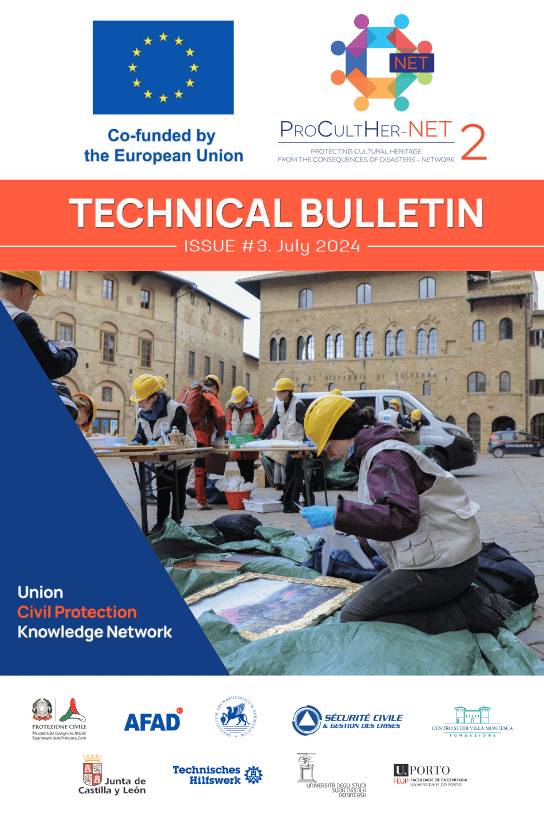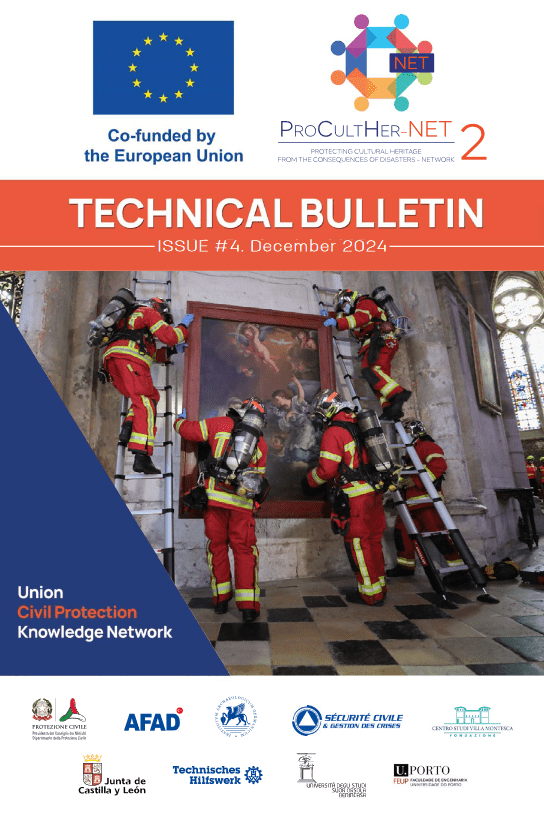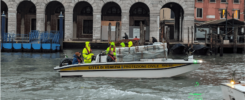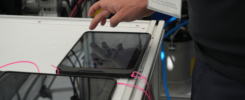As we look ahead to 2025 and plan for a new year of intensive project development – with the aim of reaching operational readiness and deployability – it is worth taking stock of what has been achieved in 2024, a year in which KulturGutRetter has shifted gears.
Building a network of volunteers
A Germany-wide call for volunteers
The major achievement of 2024 was the enrollment and training of a network of over 100 cultural heritage experts as volunteers for the Cultural Heritage Response Unit (CHRU), the internationally deployable unit of KulturGutRetter. These experts, who bring with them such diverse expertise as documentation, assessment, conservation, salvage and IT, and come from all over Germany, were identified thanks to the mobilisation of the Archaeological Heritage Network (ArcHerNet) and professional organisations across Germany, which passed on KulturGutRetter’s call for volunteers.
Two initial online information sessions were held in March 2024 to present the objectives of KulturGutRetter, and explain the role that cultural heritage experts will have to play in international response missions. New information tools were made available to interested applicants, such as an animated film and a dedicated page on the project’s blog, describing the requirements for each expert profile. These sessions were attended by over 200 people a majority of whom then formally applied to become volunteers. Each sector (Movable Cultural Assets, Immovable Cultural Assets, IT) then carefully reviewed the profiles and selected over 100 to participate in the first training sessions. These cultural heritage experts joined the civil protection experts of the THW.
The promotional video to enroll volunteers in the CHRU.
A common training for cultural heritage and civil protection experts
The KulturGutRetter project partners, DAI, THW and LEIZA, developed an online curriculum to provide joint basic training to experts from both the cultural heritage and civil protection sectors. After completing these courses at their own pace, a mixed group of 80 volunteers were invited to take part in a ‘station training’ at the THW logistics centre in Hilden. The aim of this workshop was to give the volunteers practical experience and to familiarise them with the equipment they will have to use – and sometimes assemble – in the field: the mobile emergency conservation laboratory for movable heritage, measuring instruments for immovable heritage, IT equipment… This 2-day training session was also an opportunity for team-building, across disciplines and expertise.

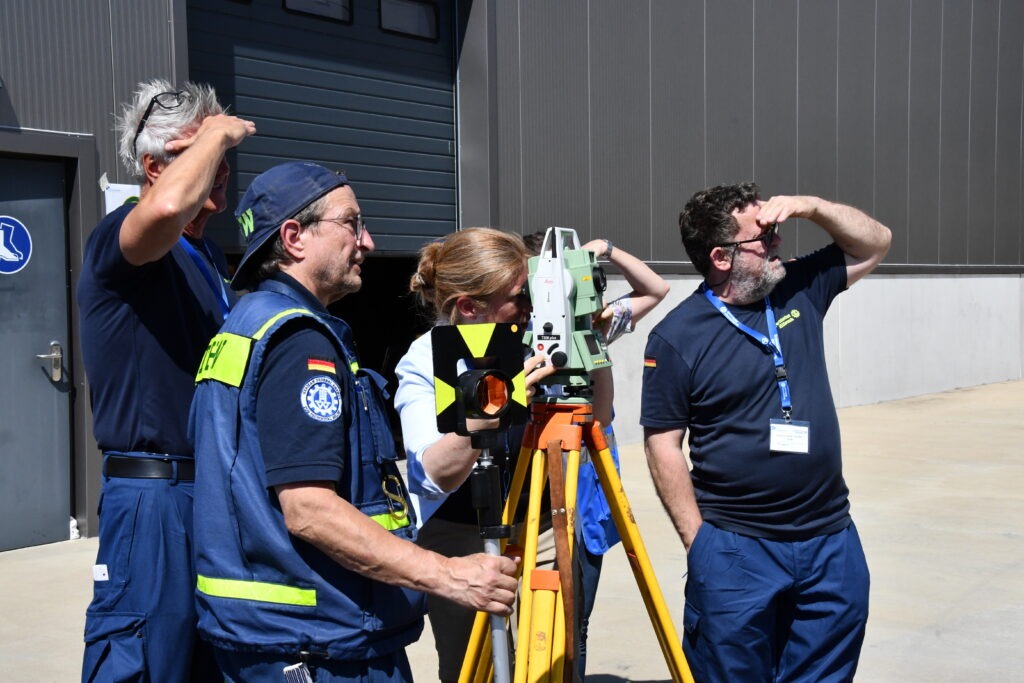
Volunteers being trained in using equipment for movable and immovable heritage. | Photos: DAI, Eva Götting
The first full-scale exercise for the CHRU
At the end of September 2024, the volunteers’ training culminated in the first full-scale exercise, which took place over three days in Demerthin, Brandenburg. The exercise scenario involved an earthquake in the fictional land of Altengard, followed by heavy rains, causing extensive damage to both immovable and movable heritage. The CHRU was to be deployed 7 days after the disaster and take over the base camp of a THW water sanitation unit. 40 volunteers took part in the training, while almost 60 people were involved in the exercise control and logistics.
The CHRU had to set up the mobile emergency conservation laboratory, carry out damage assessments on movable and immovable cultural heritage, take emergency conservation measures, stabilise, document and, if necessary, evacuate cultural heritage objects, all the while meeting the demands and requirements of local stakeholders and the central command in Germany. Role-playing introduced different storylines into the scenario, which were as many challenges that the CHRU team had to deal with while carrying out their key missions.
Overall, the full-scale exercise was a success, and the lessons learnt from this experience will help improve the CHRU workflows in view of reaching operational readiness.
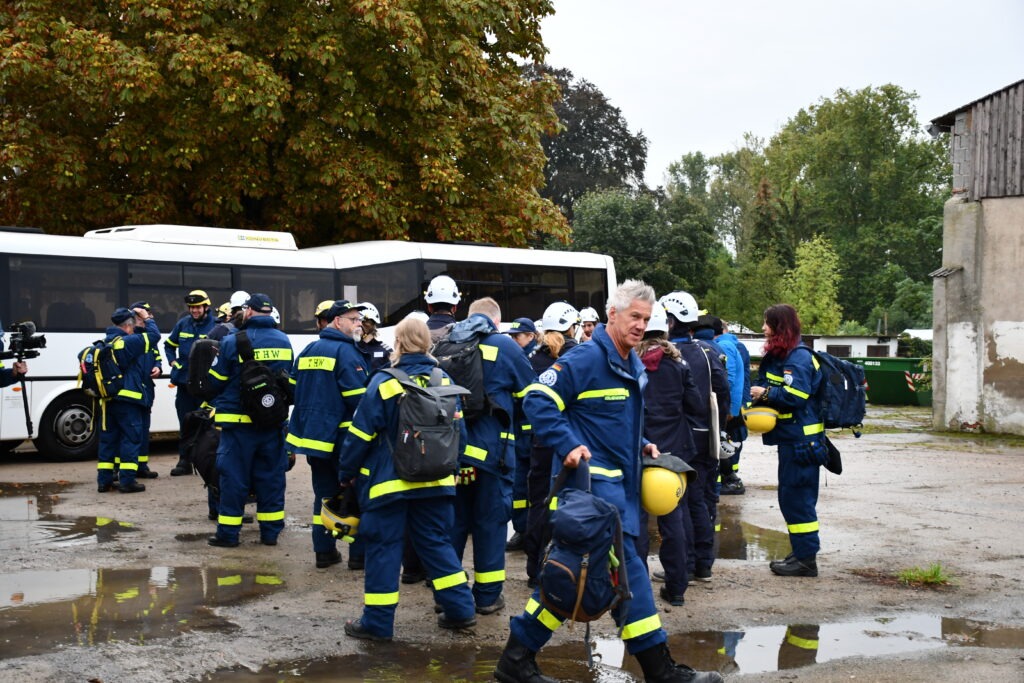
CHRU volunteers arriving on the site of the full-scale exercise. | Photo: DAI, Marcel Pasternak
National and International involvement
An active partner in the European project PROCULTHER-NET2
Since 2022, the DAI and THW have been project partners in the European project PORCULTHER-NET, which aims to build a thematic community for the protection of cultural heritage in the event of disasters. The second phase of the project was launched in 2024. In addition to its active participation in the project meetings, the DAI has been in responsible for coordinating the Technical Bulletins, a specialised publication bringing together best practices from European countries – and beyond – in the field of cultural heritage protection.
A new format was developed for the two 2024 publications (Technical Bulletins #3 and #4), involving peer reviewers to improve the quality and transferability of the articles. This also made it possible to involve more experts and new countries in the project. In addition to the DAI and THW presenting articles on remote assessment and IT equipment for emergency response, the 2024 Technical Bulletins highlighted several good practices from Germany, including the SiLK guidelines and the local preparedness networks.
Issues #3 (June 2024) and #4 (December 2024) of the Technical Bulletins. | Images: PROCULTHER-NET2
EU-MODEX in Venice
In October 2024, the European Civil Protection Exercise (EU-MODEX) in Venice included a cultural heritage component for the first time. A seven-member core team from the CHRU was invited by the PROCULTHER-NET2 project to take part in a four-day full-scale exercise, alongside civil protection units from Austria, Cyprus, the Czech Republic, Germany, Italy, Poland, Romania, Spain and the EU, who were practising field hospitals during floods. As part of the cultural heritage scenario, the CHRU team responded to the Municipal Archives and two churches to assess damage and evacuate cultural assets at risk. CHRU worked with the Short-Term Countermeasures (STC) team of the Italian National Fire and Rescue Service, which carried out structural inspections, to test the coordination and interoperability of teams within the Union’s Civil Protection Mechanism.

Evacuation of movable heritage by CHRU members during the MODEX in Venice. | Photo: DAI, Tobias Busen
Participation in events and conferences
In 2024, KulturGutRetter participated in various events at national, European and international level.
In Germany, several lectures were given in the academic context, at the Master’s Seminar “Kultur in Gefahr” at the University of Heidelberg, the Short Lecture Series “Handle with Care” at the University of Hamburg and the Lecture Series “Architectural Conservation – Heritage in Context” at the BTU Cottbus. Specialist presentations were also given to expert audiences, including the Research Data Alliance in Potsdam, the Theodor Wiegand Gesellschaft in Bonn, and the online series “Spotlight KulturGutSchutz” organised by the Deutsche Gesellschaft für Kulturgutschutz (German Society for the Protection of Cultural Heritage) and Blue Shield Germany.
Team members were presented at several celebrations of the 70th anniversary of the Hague Convention for the Protection of Cultural Property in the Event of Armed Conflict, including the UNESCO conference “Cultural Heritage and Peace” in The Hague (May 2024), a workshop in Brussels to draft recommendations to the European Union on this topic (July 2024), and the international conference “Meeting the requirements across the forces” organised at the Austrian National Defence Academy in Vienna (November 2024).
In addition, the latest achievements of KulturGutRetter were shared at conferences, such as the “International Cultural Property Protection” at the Hungarian National Museum in Budapest (November 2024) and the international online conference “Focus on Conservation“, co-organised by ICOM and the Leibniz Society.
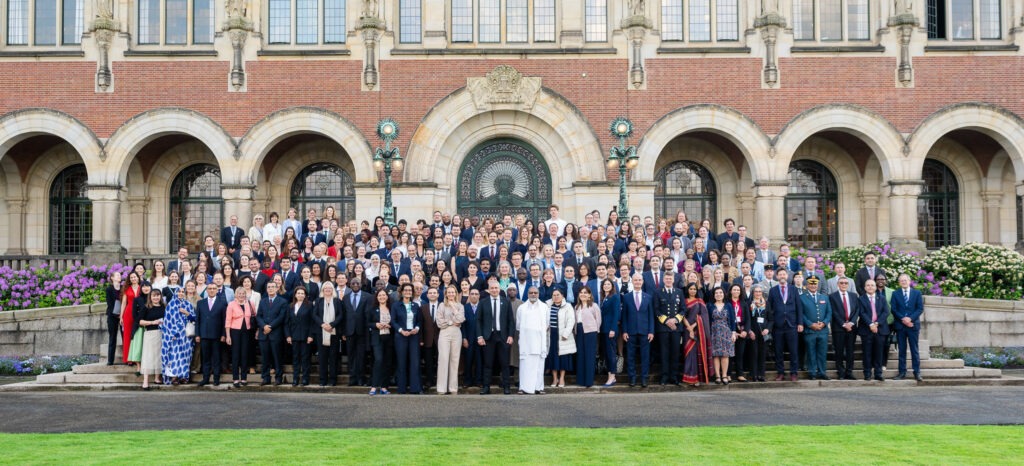
Group photo at the UNESCO conference “Cultural Heritage and Peace” in The Hague. | Photo: UNESCO
